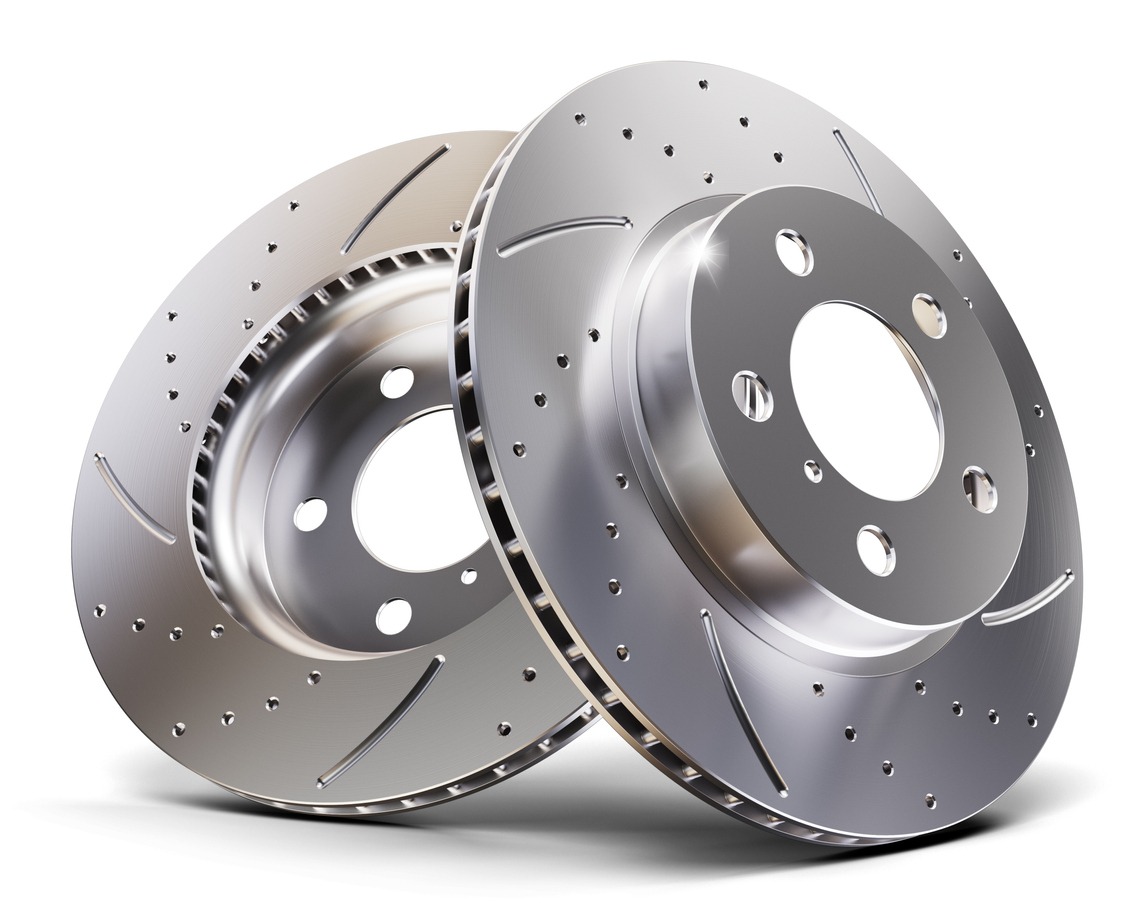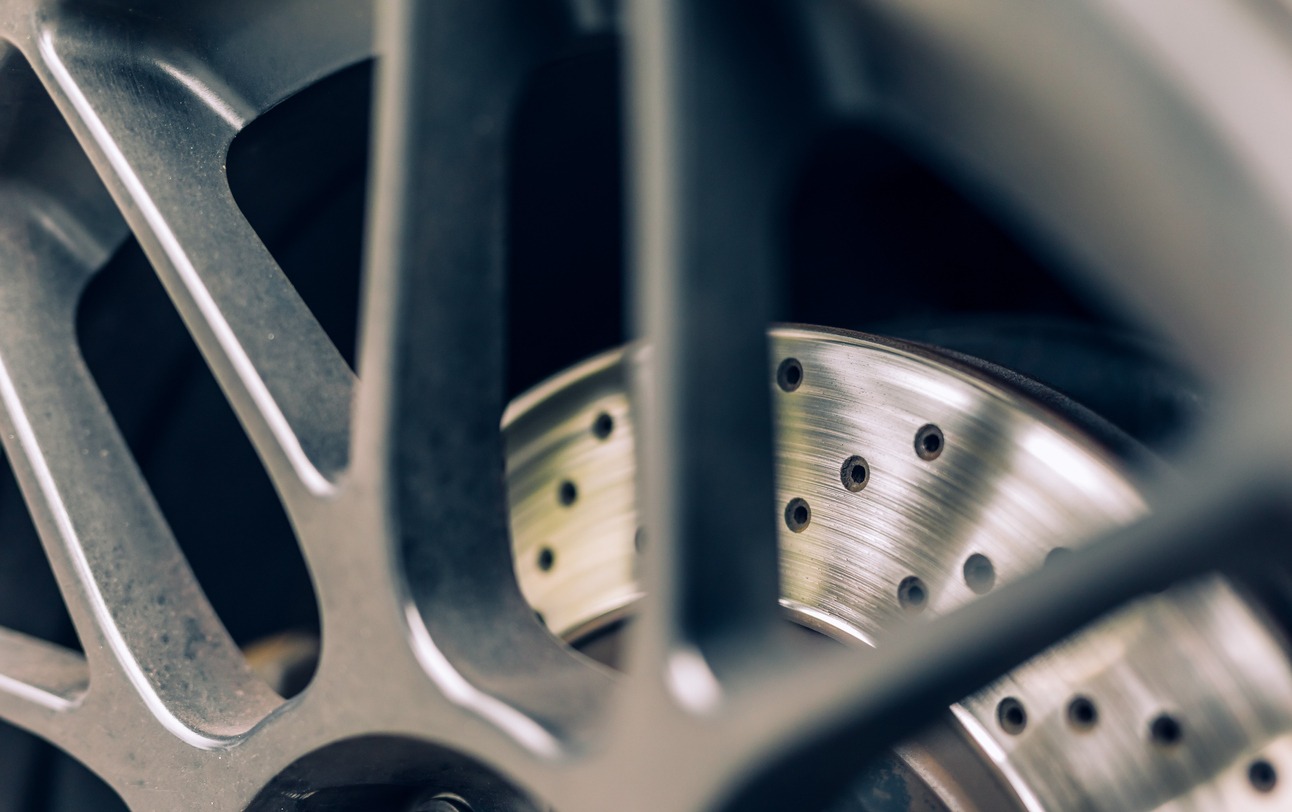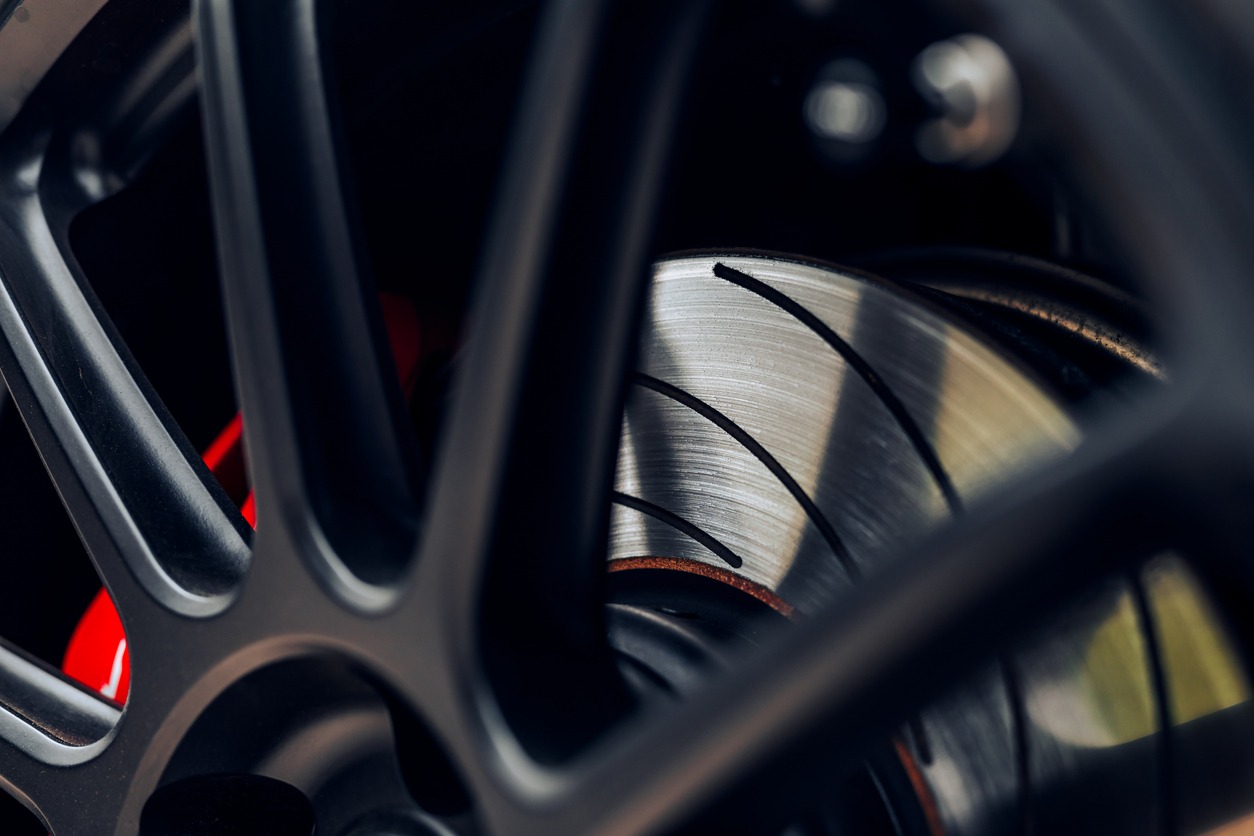Regarding car maintenance and performance, one component that often gets overlooked is the brake rotor. But do you know that the kind of brake rotor you choose is important to how well your car stops, how safe it is, and how it feels to drive? How well this works not only keeps you safe but also affects how long your brake system lasts.
While there are different types of brake rotors, two types dominate the market: drilled and slotted rotors. Each type comes with its own set of features, benefits, and drawbacks, making the decision more than just a matter of aesthetics or personal preference.
Choosing between drilled and slotted rotors isn’t just about looks; it’s about how they change the way your car brakes. In this blog post, we will dive into the details regarding these two kinds of rotors. We’ll compare them in terms of how they perform, how long they last, and which are best for different driving.
Understanding Brake Rotors
Brake rotors are an important part of your vehicle’s braking system, ensuring your safety on the road. They are the large metal discs that you can often see through the spokes of a vehicle’s wheel. When the brake pedal is pressed, the brake pads clamp onto these rotors, creating friction to slow down and eventually stop the vehicle. This process is basic to vehicle safety, as the efficiency of your braking system directly affects your ability to control the speed and handling of your car, especially in critical situations.
The importance of brake rotors extends beyond just bringing the vehicle to a stop. They also contribute to the overall handling and performance of the car. A well-functioning rotor helps ensure smooth and consistent braking, free from vibrations or pulsating sensations.
Also, brake rotors help to dissipate the heat generated from the friction between the pads and the rotors. Efficient heat dissipation is crucial, as excessive heat build-up can lead to brake fade, reducing the effectiveness of your brakes and potentially leading to longer stopping distances.
There are several types of brake rotors available in the market, each designed to meet different driving needs and conditions:
- Standard/Solid Rotors: These are the most common type of rotors and are typically used in everyday passenger vehicles. They are solid, heavy, and effective for regular driving conditions.
- Drilled Rotors: Recognizable by the drilled holes on their surface, these rotors are designed for better heat dissipation and water removal. The holes allow heat and gas to escape, improving braking performance under high-stress conditions such as racing or mountainous driving.
- Slotted Rotors: Featuring slots or grooves on their surface, slotted rotors are designed to keep the brake pads clean and free of debris. The slots help expel the gas and dust that accumulate during braking, thus maintaining a clear contact surface for consistent braking power.
- Drilled and Slotted Rotors: Some rotors combine both features, offering the benefits of both heat dissipation and pad cleanliness. These are often preferred by drivers who want a balance between everyday driving and performance needs.
- Vented Rotors: These rotors have space between two solid rotor surfaces, allowing air to flow through and cool the rotor more effectively. They are typically used in heavier vehicles requiring stronger braking systems.
If you want to learn more about the different types of brake rotors and their maintenance, check out our guide.
Drilled Rotors
Now, let’s delve deeper into what drilled rotors are for and what they can offer. Drilled rotors come with a pattern of holes drilled through their metal surface. They are designed that way for both aesthetic appeal and functional improvement.
Initially developed for high-performance and racing vehicles, these rotors are now widely available for various types of cars. The holes in drilled rotors are precisely engineered and strategically placed to maximize heat dissipation and reduce the rotor weight.
Pros:
- Dissipates heat effectively: One of the primary benefits of drilled rotors is their ability to dissipate heat more effectively than solid rotors. The holes allow the hot gases produced during braking to escape to help keep the rotor surface cooler. This is particularly beneficial in preventing brake fade during intensive braking situations.
- Improves braking in wet conditions: During rainy days, water can collect on the brake rotor’s surface. The holes in drilled rotors allow water to be quickly expelled from the rotor surface so there can be better contact between the brake pad and the rotor. Because of this, braking becomes more effective in rainy or damp conditions.
- Keeps brake pads clean: The holes in drilled rotors help to scrape away debris from the brake pad, which can prevent the glazing of the pad surface. This ensures that the pad maintains the roughness needed for optimal braking.
- Looks cool: Many car enthusiasts prefer the sporty, high-performance look of drilled rotors, making them a popular choice for visual upgrades to a vehicle.
Cons:
- Can be a bit fragile: Drilling holes into the rotor can compromise its structural integrity. Over time, this can lead to cracks forming around the holes, especially under extreme driving conditions or as the rotor wears down.
- May not last as long: Because of these little stress points around the holes, drilled rotors can wear out faster than solid ones. So, you might be looking at replacing them more often.
- Not suitable for heavy-duty use: In high-stress situations like towing or heavy hauling, the weakened structure of drilled rotors can be a disadvantage. They might be less durable and reliable than solid or slotted rotors in these conditions.
- More expensive: Generally, drilled rotors are more costly than standard solid rotors. This can be a consideration for those who are upgrading from solid rotors.
Slotted Rotors
Slotted rotors are rotors that come with distinct grooves or slots cut into their metal surface. These slots are designed to run from the center of the rotor to its edge. Unlike drilled rotors, which have holes going through the rotor surface, slotted rotors maintain their structural integrity better due to the nature of their design. Slotted rotors were initially developed for high-performance and heavy-duty vehicles, especially those subjected to extreme braking conditions.
The primary difference between slotted and drilled rotors lies in the intent of their design. While drilled rotors focus on dissipating heat and water, slotted rotors are designed to enhance the brake system’s performance by improving the pad-rotor interaction, especially under high stress.
Pros:
- Better Pad Bite: The slots on the rotor surface create an edge that helps in removing the gas and debris that build up between the rotor and brake pad. This ensures a more consistent and effective contact surface, leading to better “bite” and improved braking performance.
- Reduces Brake Fade: Slotted rotors are effective in reducing brake fade, which is the decrease in braking power that can occur during repeated or sustained braking. The slots help in venting the gases produced during high-friction braking, maintaining the efficiency of the brake pads.
- Durable under high-stress conditions: Due to their robust design, slotted rotors are more durable under high-stress conditions, such as during aggressive driving, towing, or heavy hauling. They are less prone to cracking compared to drilled rotors.
- Good for Performance Driving: Slotted rotors are often the rotor of choice for performance vehicles and race cars. Their design offers consistent braking performance and reliability under rigorous driving conditions.
Cons:
- Rapid Pad Wear: The aggressive nature of slotted rotors can lead to quicker wear of brake pads. The slots can grind down the pad material more swiftly, potentially leading to more frequent pad replacements.
- Limited Heat Dissipation: Slotted rotors offer better pad-rotor interaction but are not as effective in dissipating heat as drilled rotors. This might be a concern in situations where overheating is a significant risk.
- Noisy and Vibrating: Some drivers may notice increased noise and vibration during braking with slotted rotors. This is because of the interaction between the pads and the slots, which can create a humming or buzzing sound.
- Costly: Like drilled rotors, slotted rotors can be more expensive than standard solid rotors. This cost difference might be a factor for those considering an upgrade from conventional braking systems.
Drilled vs. Slotted Rotors: What to Choose for Your Car?
To choose the right type of brake rotor, it’s best to understand the key factors to consider. Here, we’ll discuss these factors and provide tips on consulting with professionals for a well-informed decision.
Factors to Consider:
1. Driving Style and Conditions
If your driving primarily involves regular commuting or city driving in moderate conditions, the choice between drilled and slotted rotors may come down to personal preference regarding cost and the desired level of performance enhancement.
But suppose you’re engaged in performance driving, including track days or spirited road driving. In that case, slotted rotors are generally a better choice due to their consistent braking performance and durability under high-stress conditions.
Meanwhile, if your vehicle is frequently used for towing, carrying heavy loads, or in fleet operations, slotted rotors are recommended for their robustness and ability to withstand intense usage.
2. Vehicle Type
Different vehicles may have specific requirements or limitations when it comes to upgrading brake rotors. Consider the make and model of your vehicle and whether it has any specific needs that either drilled or slotted rotors better serve.
3. Climate
If you live in a region with frequent rain or wet conditions, drilled rotors offer better performance due to their ability to expel water more effectively.
4. Budget and Maintenance
Consider your budget not just for the initial purchase but also for ongoing maintenance. Slotted rotors may lead to more frequent brake pad replacements, adding to the overall cost.
5. Aesthetics
For some drivers, the look of the brake rotors is just as important as their performance. Drilled rotors often have a more sporty appearance, which might be a deciding factor for car enthusiasts.
Tips on Consulting with Automotive Professionals
1. Seek Expert Advice
Consult with a trusted mechanic or automotive specialist. They can provide valuable insights based on your specific vehicle model and driving habits.
2. Discuss Your Driving Habits
Be clear about your typical driving conditions and what you expect from your brake system. This will help the professional guide you toward the best choice for your needs.
3. Inquire About Compatibility
Ask about any compatibility issues with your vehicle. Some brake systems might require additional modifications to accommodate different types of rotors.
4. Consider Long-Term Costs
Discuss the long-term maintenance costs with your mechanic. Understanding the total cost of ownership, including potential increased wear on brake pads or other components, is essential.
5. Check for Warranties and Guarantees
Inquire about warranties or guarantees that come with different rotor types. This can provide peace of mind and protection for your investment.
6. Look for Trusted Brands
Seek recommendations on brands or manufacturers with a reputation for quality and reliability in brake rotors.
Conclusion
Both drilled and slotted rotors offer unique benefits and drawbacks. The decision should be based on a careful assessment of your specific driving needs, vehicle requirements, and personal preferences.
Remember that the right choice in brake rotors not only enhances the performance of your vehicle – it can also help ensure your safety on the road. Whether you opt for the enhanced wet weather performance of drilled rotors or the durable, consistent performance of slotted rotors, make sure your decision aligns with your driving habits and the conditions you most frequently encounter.
Stay informed, consult with experts, and choose wisely to ensure that your vehicle remains a safe and enjoyable part of your daily life.



